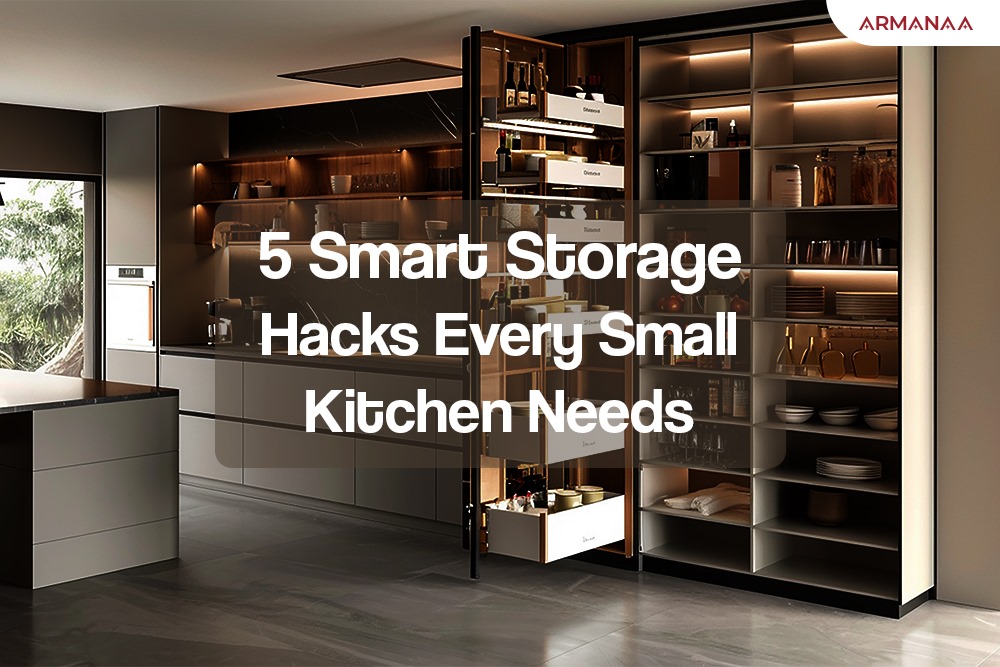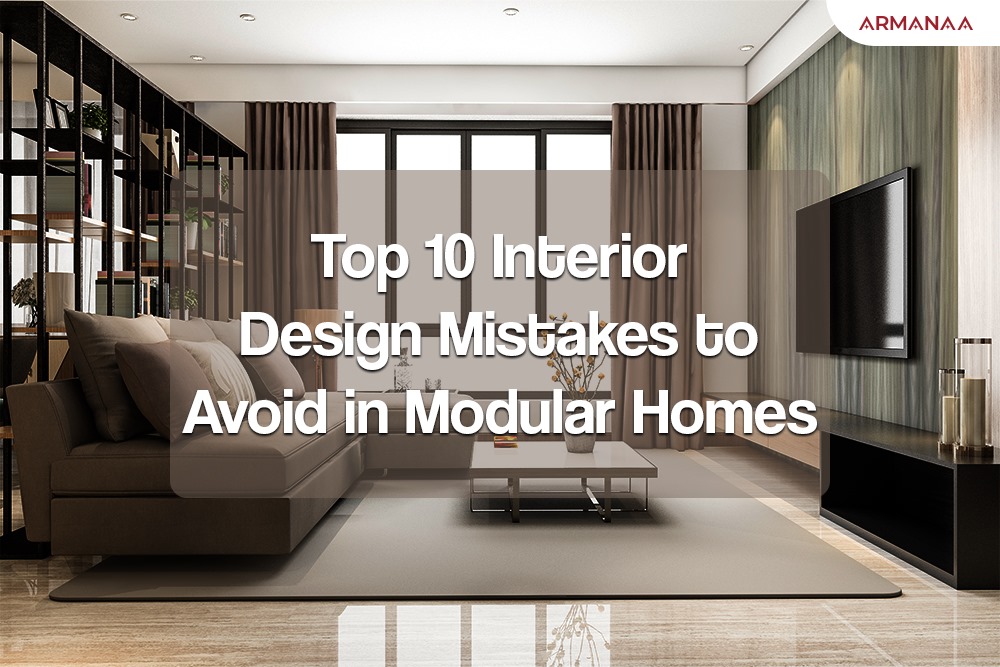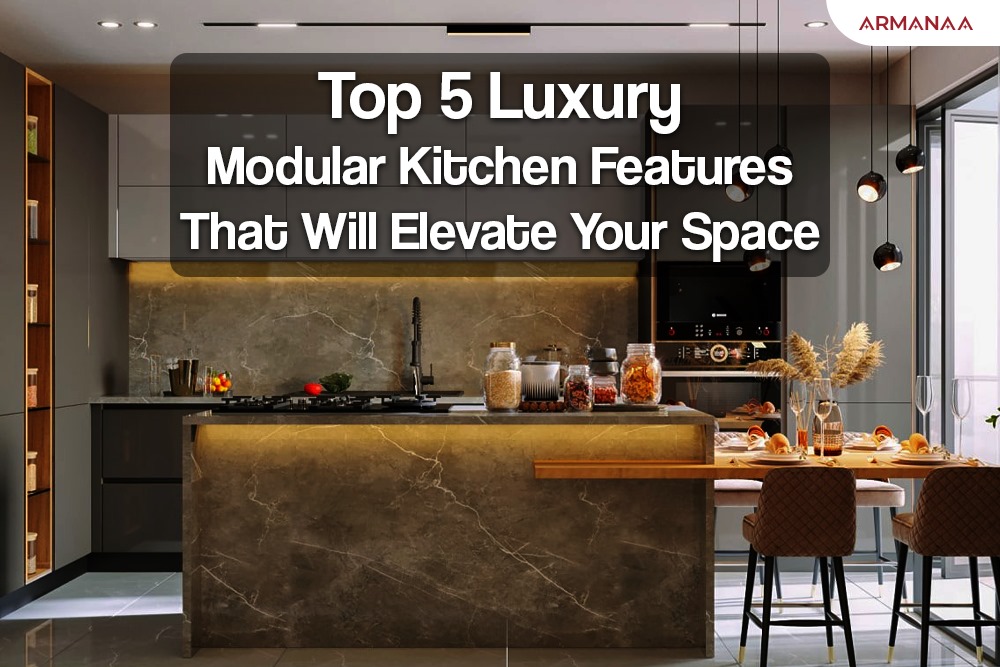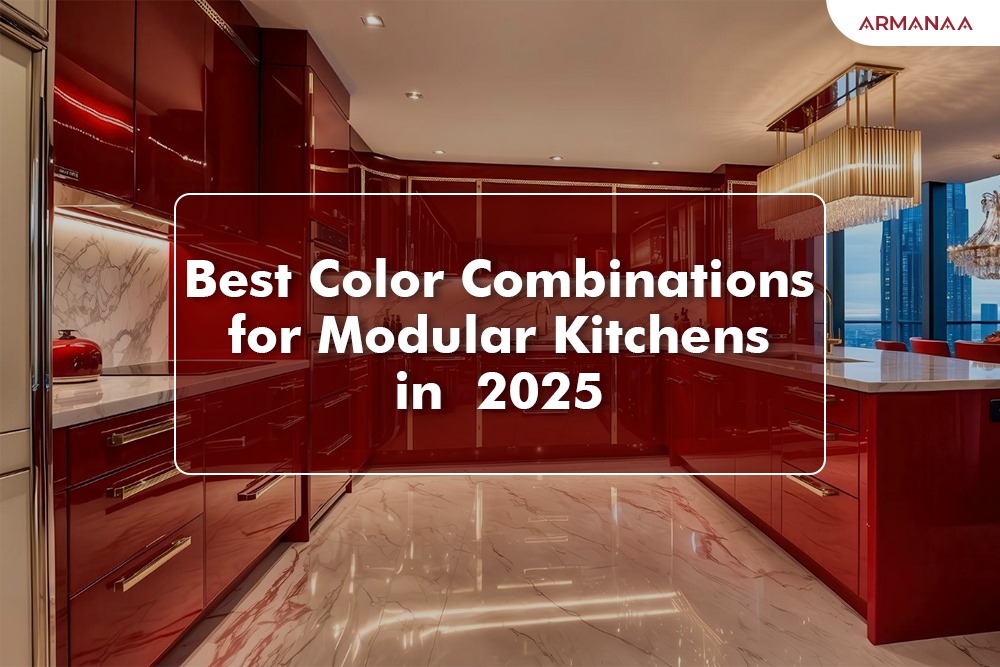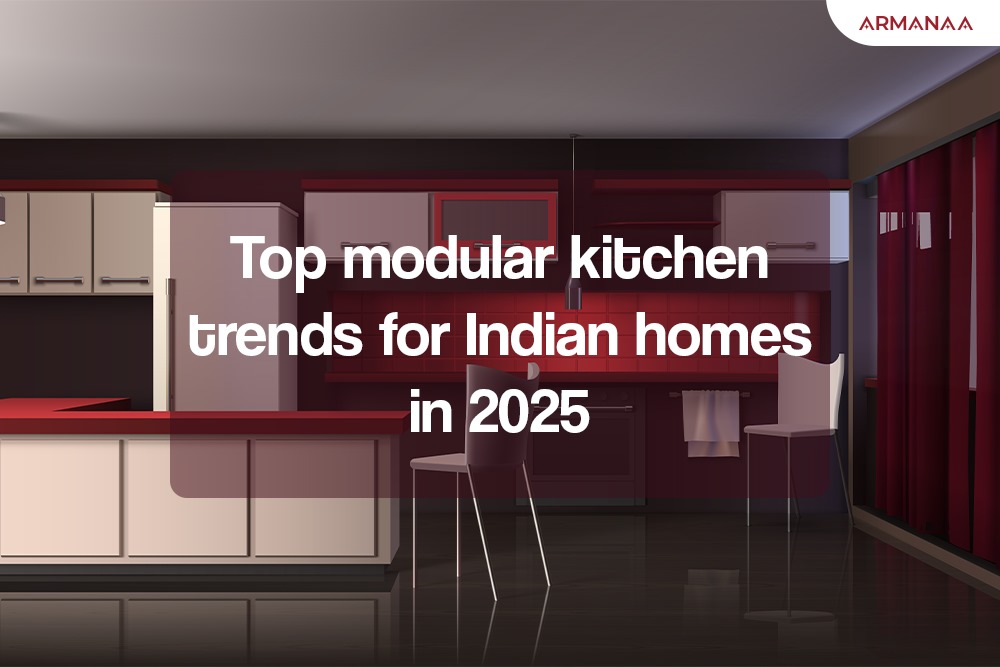
How To Customise Your Modular Kitchen : Tips For Personalized Space
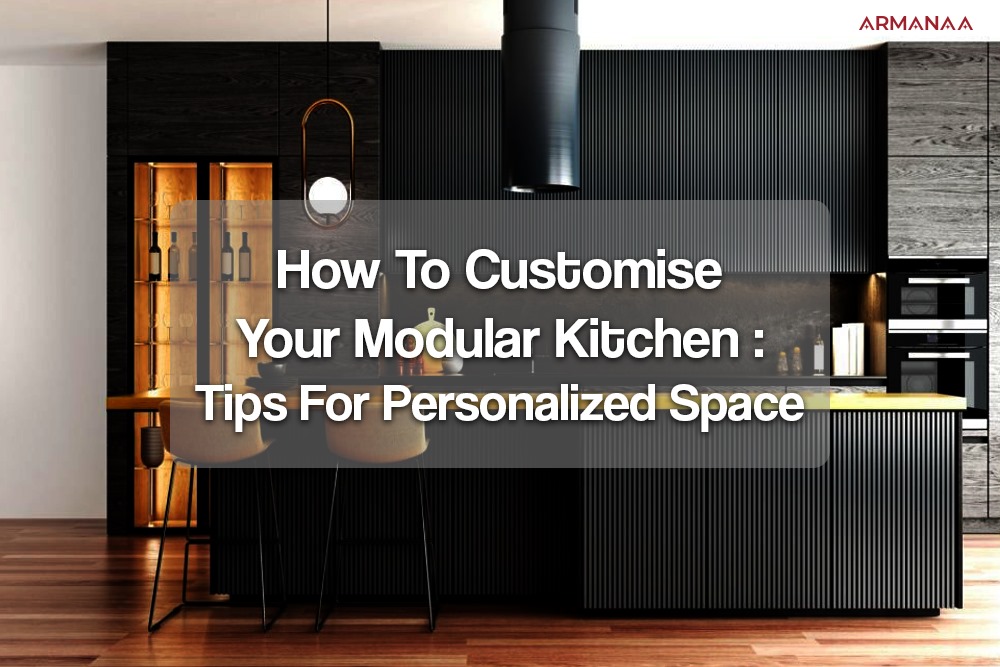
A modular kitchen is a bit like lego sets for grown-ups – cabinets, drawers, countertops, tall units and accessories. They click together to form a complete cooking zone. Its genius lies in the flexibility – you get to choose the material, pieces, finishes and internal fittings. So, that it suits your cooking style, budget, storage-needs and taste. Yet, because your modular kitchen is set to be manufactured to standard sizes, every modular kitchen risks looking and feeling the same.Below is a practical guide to help you design a modular kitchen.
Start with lifestyle mapping, not a door finish
Many homeowners begin by scrolling through Pinterest pictures of cabinets, drawers etc.That’s fun, but the first step is an honest review of how you actually use the space.
Cooking Habits: Do you deep‑fry often? You may need a powerful chimney hood. Love dosa batter? Plan a tall, ventilated shelf to keep the wet grinder.
Family Size & Helpers: A joint family or live-in cook changes the traffic flow.
Frequency of Grocery Runs: If you shop weekly, you want bulk‑storage but if you shop daily, you can spare some pantry volume for open shelves.
Diet & Cuisine: Heavy use of masalas suggests dedicated spice drawers with stainless‑steel canisters whereas Western baking calls for shallow drawers to neatly file cake tins and silicone moulds.
Perfect the Ergonomic Triangle for Maximum Comfort
The classic work triangle – cooktop, sink and refrigerator, still applies but the exact distances should fit your reach , here’s how to personalize ergonomics
Measure your Elbow Height – Ideal countertop height should be your elbow height minus 10-12 cm.Shorter or taller cooks may need 82 cm or 94 cm counters rather than the Indian default of 86 cm.
Step width Preferences – If you hate juggling between tasks, keep each leg of the triangle near 120 cm.
Left‑ or right‑handed – Place frequently used drawers on your dominant‑hand side.
Modular ≠ Monotone: Mix Layout Shapes
Most catalogues show full walls of upper cabinets, but you can combine:
Full height units: on one wall for appliances and dry groceries.
Open niches and floating shelves: above the cleaning zone to break visual bulk and showcase pottery
Curate Interior Hardware Like a Tech Geek
Multi‑tier cutlery trays let you slide from one layer to another — perfect for segregating roti servers from dessert spoons.
Corner carousels versus LeMans swing‑out trays — pick based on what you store (pressure cooker vs frying pans).
Servo‑drive lift‑ups on wall cabinets are bliss if you dislike overhead shutters grazing your forehead.
Soft‑close runners(drawer slides) with ≥40 kg load rating ensure the drawer for cast‑iron Kadai never sags.
Spend where hardware endures daily punishment; you can always economise on a secondary laminate colour.
Materials & Finishes:
Build a Palette Story Modular kitchen offer dozens of carcass materials like(particle board, BWR plywood,stainless steel),shutter skins(acrylic and PU paint) and countertop choices(granite, quartz and sintered stone)
Anchor with context: In humid coastal cities, marine plywood carcasses plus quartz counters to fight moisture and staining. In drier regions, high‑grade MDF with PU paint may suffice.
Balance texture: if you crave bold patterned tiles, keep cabinet doors matt and neutral and vice versa.
Test under lighting:Colours of the cabinet, shelves, chairs, tables and other things shift between showroom LED’s and your warm white home bulb.
Plan Layered Lighting From Day One
People often retrofit lights, but modular panels hide wiring
Task lighting:If the cabinet LED strips are put up front, it prevents hand shadows while chopping.
Ambient lighting: It creates space and depth.
Accent lighting: or often called puck light, used for shelves and other areas, adds theatre.
Integrate Appliances Seamlessly
Built‑in ovens, microwaves, dishwashers, even warming drawers can vanish behind matching fronts.
Fully integrated: Fully integrated appliances give a sleek European vibe and clean edges.
Semi‑integrated: Appliance’s control panel remains exposed.
Freestanding: Needs breathing space and may dictate cabinet colour.
Account for Regional Cooking Realities
Indian kitchens wrestle with turmeric stains, hot oil splatters, and heavy utensils. Some adaptations:
White Slab quartz are easier to degrease than white subway tiles.
Roll‑out skillet racks near the stove keep tavas flat and prevent scratches on non‑stick pans.
Pull‑down hanging rods can hold steel katoris for drying a hack borrowed from professional dhabas.
Dedicated cylinder drawer with venting grilles if piped gas is unavailable.
Create Zones Beyond Cooking
The kitchen today holds conversations, homework or even podcasts therefore it’s necessary to design the kitchen accordingly:
A breakfast bar or coffee corner: with its own tiny sink and pocket door appliance garage.
A charging drawer with USB ports.
A chalkboard or magnetic glass panel under the peninsula for writing down grocery lists or kids doodle.
These micro‑zones turn a rigid rectangle of modules into a social heart.
Sustainability Touchpoints
Customization isn’t only about looks.Build eco smart designs
Bamboo or recycled wood covering instead of virgin hardwood veneers.
waste‑segregation bins with colour‑coded lids inside a tall pull‑out.
Aerated taps and induction cooktops to cut water and energy bills.
Natural daylight optimisation: use glass fins or skylights so you rarely switch on LEDs at noon.
Keep Budget Fluid, But Controlled
Allocate in 3 buckets: spend on 50% structure, 30% hardware and 20% finishes and lighting.
Choose upgrade ready modules:Fit basic drawers but leave out space for pull out pantry later.
Bundle custom work-if you crave a custom made breakfast corner. Commission the carpenter to craft it alongside standard carcasse.
Document every change order in writing; modular suppliers often charge per tweak.
Inject Personality Finishing Touches
Finally, design the kitchen that shouts”this is me”.Examples are:
Hand painted moroccan tiles
A vintage spice rack from your grandmother’s kitchen, that fits modular and modern kitchen
Color enhanced cabinets
Conclusion
A modular kitchen is a flexible canvas.The secret to customise it lies in aligning every module, hinge and accent tiles with the way you live,cook, entertain and unwind. Start with lifestyle mapping, perfect the ergonomics to your body that matches your utensils, and finish with colours and textures. The result is a kitchen that offers the efficiency of a factory yet tells a handcrafted story , the story of your home.

